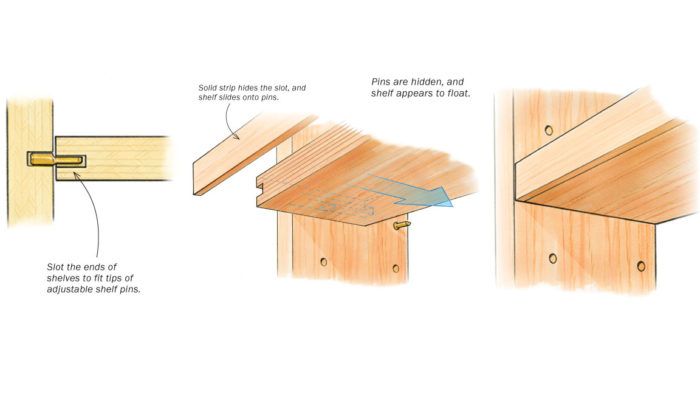
Like many people, I use those little spoon-shaped pins to create adjustable shelves in cabinetry. They do the job but leave the shelf feeling wobbly, and I don’t like seeing the pin tips underneath. So now I cut a slot on the side edges of the shelf (before adding a solid-wood strip to the front edge), so the little pins can slide into the slots. Not only does that make the shelf more secure, but it also makes it impossible for the pins to drop out, and it hides them, giving the finished shelf a floating look. If you are worried about shelf strength, you can cheat the slots downward a bit, below the centerline.
From FWW #267
Drawings by Dan Thornton
More on FineWoodworking.com:
- Build a Shelf Pin Drilling Jig – Learn how to build a shelf pin drilling jig that’s easy to use and dead-on accurate
- Building Bookshelves to Last – How to support loads of any size and weight for years to come
- Shelving, Plain and Simple – Strong, versatile and easy to make, these shelf units use inexpensive materials






















Comments
Save yourself the trouble of adding edge banding by cutting the slot on the router table from back to front, stopping short of the front edge.
I agree with PGMtl. Either that or cut a notch on the bottom of the shelf that the pins rest in. Pins will be invisible, notches will only be seen if you're on your knees, and more material is left in place supporting the pins.
keving0611 I like your idea as it keeps the shelves from sliding forward, while mine keeps them from popping upward. Maybe different applications will prefer one method over another.
Do a web search for "wire shelf support" for something that looks like this.
Log in or create an account to post a comment.
Sign up Log in